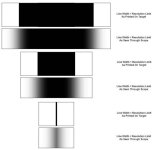Boyd Allen
Active member
Fred,
As I mentioned, the shooters that looked through our test scopes were all short range benchrest shooters, and they were given complete freedom to adjust the scopes any way that they wanted to. Also, as mentioned, all scopes were at least nominally 36X.
I had spent some time looking through the array of scope before we took it to the match, and was a bit surprised at some of the interest that was expressed in one of the scopes that I had not paid much attention to, probably because of brand bias. It was a Tasco, of which there were two, an earlier one that had a conventional AO and a later one that had an adjustment that was similar to the power ring on a variable.
No manufacturer has much incentive to set up a test like this, neither would any commercial publication that depends on advertising revenue, because the manufacturers that did not fare well would have little reason to support something that did not cast their product in a favorable light. Nevertheless, if this test could be redone, I think that the results would be of interest.
At the time that we built the device, a friend who had done some writing had a connection with Millet, and so we were able to get five sets of their Weaver style windage adjustable rings, and five bases that were built for model 336 Marlins which have flat topped receivers. I found a scrap of 3/8" aluminum plate, and a friend who has a mill helped me square it up and dimension it. After that we used a carpenters square to lay out parallel scribed lines, and then center punched, drilled and tapped the base mounting holes. After the bases were mounted, I built what looked like a short saw horse that the fixture was mounted to the top of, that positioned the scopes at eye level when sitting at a table that it rested on. Then I used an old scope that had had its reticule physically centered by inspection, using a V fixture, to adjust all of the rings so that they were all aligned to a single distant point. Then I centered the reticule of the first scope, mounted it, and then mounted and adjusted the other scopes so that their reticules were centered on the same distant target. I did this to ensure that we were looking through all the scopes very near to their optical centers. In any case, everything worked as it should, and it was very easy to sit comfortably at the table, with ones elbows resting on it, and shift from side to side, from scope to scope. This removed the whole memory of an image issue. Perhaps someone will take up this challenge and recreate our test with a modern selection of scopes.
Boyd
As I mentioned, the shooters that looked through our test scopes were all short range benchrest shooters, and they were given complete freedom to adjust the scopes any way that they wanted to. Also, as mentioned, all scopes were at least nominally 36X.
I had spent some time looking through the array of scope before we took it to the match, and was a bit surprised at some of the interest that was expressed in one of the scopes that I had not paid much attention to, probably because of brand bias. It was a Tasco, of which there were two, an earlier one that had a conventional AO and a later one that had an adjustment that was similar to the power ring on a variable.
No manufacturer has much incentive to set up a test like this, neither would any commercial publication that depends on advertising revenue, because the manufacturers that did not fare well would have little reason to support something that did not cast their product in a favorable light. Nevertheless, if this test could be redone, I think that the results would be of interest.
At the time that we built the device, a friend who had done some writing had a connection with Millet, and so we were able to get five sets of their Weaver style windage adjustable rings, and five bases that were built for model 336 Marlins which have flat topped receivers. I found a scrap of 3/8" aluminum plate, and a friend who has a mill helped me square it up and dimension it. After that we used a carpenters square to lay out parallel scribed lines, and then center punched, drilled and tapped the base mounting holes. After the bases were mounted, I built what looked like a short saw horse that the fixture was mounted to the top of, that positioned the scopes at eye level when sitting at a table that it rested on. Then I used an old scope that had had its reticule physically centered by inspection, using a V fixture, to adjust all of the rings so that they were all aligned to a single distant point. Then I centered the reticule of the first scope, mounted it, and then mounted and adjusted the other scopes so that their reticules were centered on the same distant target. I did this to ensure that we were looking through all the scopes very near to their optical centers. In any case, everything worked as it should, and it was very easy to sit comfortably at the table, with ones elbows resting on it, and shift from side to side, from scope to scope. This removed the whole memory of an image issue. Perhaps someone will take up this challenge and recreate our test with a modern selection of scopes.
Boyd


